Program Day 3 - January 11, 2023
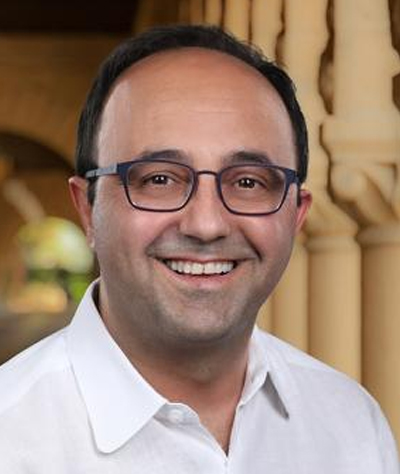
Josef Parvizi
9:00 - 10:00 :- Studying Cognition with Intracranial Recordings and Electrical Stimulation of the Human Brain
Bio: Dr. Parvizi is a clinical neurologist at Stanford University Medical Center and is the principal investigator at the Laboratory of Behavioral and Cognitive Neuroscience that specializes in studying cross-regional dynamics of activity within the human brain. Dr. Parvizi completed his medical education at the University of Oslo and moved to the United States to complete his PhD training with Dr. Antonio Damasio (cognitive neuroscience) and Dr. Gary Van Hoesen (neuroanatomy). He completed his internship training at Mayo Clinic – Rochester and Neurology residency at Harvard. He completed epilepsy training at UCLA and has been working in the Department of Neurology and Neurological Sciences at Stanford University since 2007.
Lab website: http://med.stanford.edu/parvizi-lab.html.
Title: Studying Cognition with Intracranial Recordings and Electrical Stimulation of the Human Brain
Abstract: Cognition, as a function of the brain, depends on cross-regional interactions, in the millisecond temporal window, between discretely localized populations of neurons. In my lab, we use direct intracranial recordings from inside the brain that offer millimeter anatomical precision and millisecond temporal resolution and combine it with direct intracranial electrical stimulation of the recording sites to acquire unique information about the causal relevance of our observations to human behavior and subjective experience. Our multimodal approach has revealed previously unknown profiles of physiological activity within the human brain that could not have been attained with non-invasive methods. In this presentation, I will highlight some of our most recent findings of cross regional interactions relevant to the processing of autobiographical memories.
Session Chair: Supratim Ray
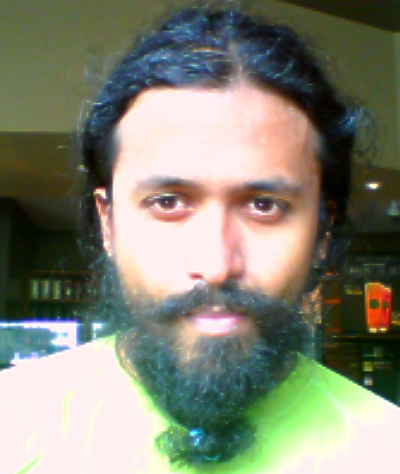
Nisheeth Srivastava
10:00 - 11:00 :- Characterizing evidence thresholds for human decision-making
Bio: He teaches Computer Science and Cognitive Science at IIT Kanpur.
The only way so many different people can agree about so much they experience in the world is if the fundamental substrate for those experiences is identical. This is clearly true at the level of gross physiology, but cognitive scientists believe that this is also true of more abstract categories of phenomena that underpin experience. By abstract categories, he mean things like attention, memory, values, emotion, and motivation. These aren’t physically observable phenomena, but seem to play important organizing roles in any meaningful analysis that tries to understand the lived experience. The hope of cognitive science is to clarify how and why these phenomena arise, interact, and dissipate.
Title: Characterizing evidence thresholds for human decision-making
Abstract: Every decision actually conceals another decision . Overtly, decisions are reflected in the selection of one choice out of all available possibilities. However, our examination of these choices involves an element of deciding when we’ve seen enough, or thought enough, about the choices available in order to make a decision. The process of thinking about choices is well-understood across multiple levels of explanation. Behavioral scientists have tested various forms of race-to-threshold models to demonstrate that human decisions involve some sort of accumulation of evidence up to a limit, followed by emission of a decision. Neuroscientists have used both animal and human studies to demonstrate the existence of precisely such an accumulative process in the lateral intraparietal region of the brain. However, less is understood, both behaviorally and neuroscientifically about how such limits are defined for decisions in the first place. In this talk, I will describe three studies in my lab where we try to ask this question. First, I will describe what sort of computational models best explain humans’ decision-to-decide in a particular experimental paradigm called decision-by-sampling. Second, I will describe some modelling and experimental results from my lab suggesting that humans’ decisions about how much evidence to collect before deciding may be adaptive even in simple perceptual decision-making tasks. Third, I will present a model explaining Parkinson’s Law – that effort goes to infinity as time to deadline goes to zero, as rational metareasoning about where to place decision thresholds. I will conclude with thoughts about how to correlate this line of work with neuroscientific methods of inquiry.
Session Chair: Supratim Ray
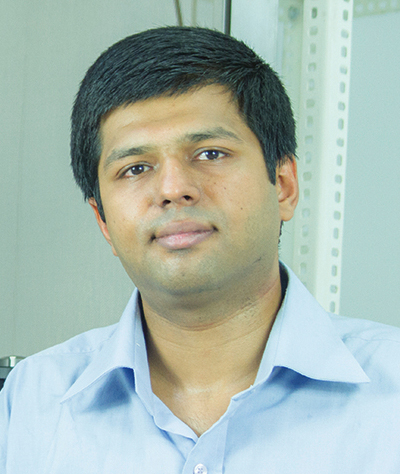
Shyam Diwakar
11:30 - 12:30 :- Multi-Scale Modeling of the Cerebellum: Computational Neuroscience of single Neuron Models, Circuit reconstructions and Emergent Responses
Bio: Shyam Diwakar is the Director of the Amrita Mind Brain Center, a Faculty fellow at the Center for International Programs at Amrita University. He is the Institute Integration Coordinator and Lab Development Coordinator of the major virtual labs initiative supported by Sakshat mission of Minsitry of Education, Government of India, Indian cordinator of the Multi-Scale Brain Function India-Italy Network of Excellence and the Principal Investigator of few other projects. He currently continues his research on computational neuroscience, neurophysiology, EEG and buikding devices and tools for neurology and neuroscience.
Title: Multi-Scale Modeling of the Cerebellum: Computational Neuroscience of single Neuron Models, Circuit reconstructions and Emergent Responses
Abstract: Computational neuroscience is trending multiple directions including bottom-up and top-down reconstructions of brain cells and circuits tobetter understand function and dysfunction. Modeling entire brain circuits has been progressing outcomes that may lead to digital twins and virtual patiemts. Degeneration of the granular layer of the cerebellum is also an autosomal recessive disorder exhibiting clinical features such as delayed motor development, nonprogressive ataxia, delayed language development with dysarthria and mental retardation (Pascual-Castroviejo, 1994). Information transmission at the Mossy Fiber (MF) – Granule cell (GrC) synaptic relay is crucial to understand mechanisms of signal coding in the cerebellum (Albus,1971) (Marr, 1969). The cerebellum input stage has been known to perform combinatorial operations on input signals. Using models (Medini, 2012, Vijayan, 2022), this talk will focus on information transmission and signal recoding in the cerebellum. Understanding population activities of underlying neurons reveal emergent behavior as patterns of information flow in neural circuits. Local field potentials (LFPs) (Parasuram, 2016, 2017) and BOLD signals (Nutakki, 2020) were reconstructed to test and parameterize the molecular mechanisms of cellular function with network properties. Using methods in computational neuroscience, we reconstructed synaptic spike-time dependent plasticity and explored the role of single neurons in neural ensembles. The abstraction of a cerebellum-inspired model (Vijayan, 2022) to robotic tasks including pattern recognition and recoding of inverse kinematics for trajectory tracking as emergent circuit behaviors will be discussed.
Session Chair: Supratim Ray
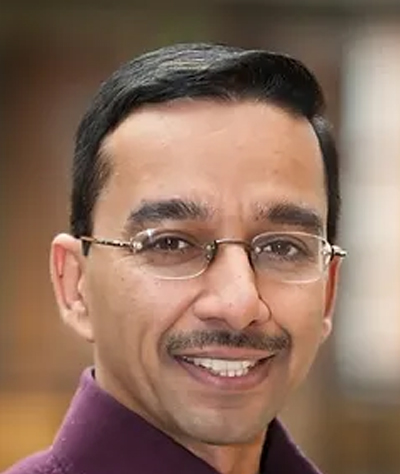
Rajesh P. N. Rao
14:00 - 15:30 :- Tutorial
Bio: Rajesh P. N. Rao is the CJ and Elizabeth Hwang Professor in the Paul G. Allen School of Computer Science and Engineering and Department of Electrical and Computer Engineering at the University of Washington (UW), Seattle. He is also the co-Director of the Center for Neurotechnology (CNT), Adjunct Professor in the Bioengineering department, and faculty member in the Neuroscience Graduate Program at UW. He directs the Neural Systems Laboratory located in the Paul G. Allen Center for Computer Science and Engineering. His awards include a Guggenheim Fellowship, a Fulbright Scholar award, an NSF CAREER award, an ONR Young Investigator Award, a Sloan Faculty Fellowship, and a David and Lucile Packard Fellowship.
His research interests span computational neuroscience, brain-computer interfaces, and artificial intelligence as well as the Indus script and classical Indian paintings.
Session Chair: Sridharan Devarajan
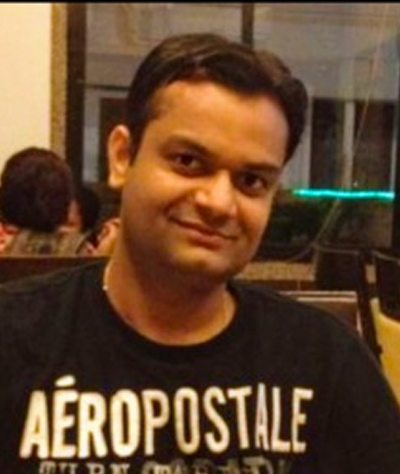
Veeky Baths
16:00 - 17:00 :- SSVEP and Eye-Blink detection based BCI as Assistive Technologies
Bio: Veeky Baths received his Ph.D. Degree from Birla Institute of Technology & Science, Pilani, India in the year 2012. He then obtained an MBA from Goa Institute of Management. Currently he is working as an Associate Professor and heading the Cognitive Neuroscience Lab at BITS, Pilani K. K. Birla Goa Campus. He has received many Prestigious National and International research grants such as iBRAIN. He has 16 years of experience of teaching and research and has published many research articles in reputed conferences and journals. He is an Honorary Board Member of the Association for Reading and Writing in Asia (ARWA). He is a founding member of the Society for the Cognitive Science of Culture (SCSC). The society aims to understand the human mind and how cultural objects (e.g., literacy; religion), including those within culture at macro-level, can shape the human brain and mind. His research interests include Computational Psycholinguistics and Alzheimer’s Dementia Detection from Spontaneous Speech using Machine Learning, Brain Computer Interface and Consumer Neuroscience
Title: SSVEP and Eye-Blink detection based BCI as Assistive Technologies
Abstract: SSVEP and Eye-Blink based BCI systems have emerged as novels tools to assist physically disabled people, who are either entirely wheelchair bound or lack limbs for communication. Home automation, navigation, and appliance usage are the most common application areas for these systems. Two such applications, developed in our lab, are discussed in this talk. The first one discusses a non-GUI based hardware implementation of device identification, detection and confirmation in home setting using Using SSVEP & Eye-Blink Detection Based Brain-Computer Interface. Furthermore, a coarse Bluetooth-based indoor user localization that may help in expanding the number of devices detected and controlled using SSVEP is also discussed. In the second application, a low-cost prototype of wheelchair automation for the disabled using SSVEP and eye-blink detection based BCI is discussed.
Session Chair: Sridharan Devarajan
